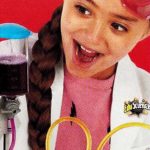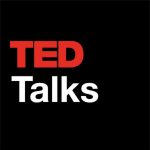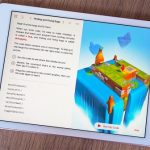Tend.ly Aims to Improve Communication Between Caregivers, Families

Caitlin Coffman’s two oldest children were in school by the time she figured out a way to avoid the frustration that plagued her during their day care years: The daily “activity reports” sent home with her kids didn’t provide a clear enough picture of what was happening while she was at work.
“I wanted more information, so I could have better conversations with my children about their day,” said Coffman, 39. “Something more than [it was] ‘good, fine, or terrible.’”
So she left her product development job at an Indianapolis parking management firm about two years ago to work on Tend.ly, a software platform that allows caregivers to capture and share moments from throughout the day—in real time, if families prefer.
“It’s a type of technology that’s very familiar,” said Coffman, Tend.ly’s CEO. “I will only once compare it to Facebook, because it’s nothing like Facebook. But the motions are the same, the concepts are the same: You have a device. You take a picture. You tag someone in it and post it to a timeline. … Tend.ly does the rest.”
Although some large day care center operators already use software to manage enrollment, billing, and other administrative operations, the vast majority of the $ 48 billion industry is still shuffling paper (and maybe e-mails). It’s no wonder: The Census Bureau says 90 percent of U.S. child care businesses don’t have employees other than the owner.
As technology becomes more pervasive, startups like Tend.ly are emerging to help care providers of all sizes improve communications with their clients. Research from Toronto-based competitor HiMama, which launched an app connecting parents and teachers in late 2013, pegs the North American market for such products at about $ 1 billion annually.
“More and more research is showing the importance of parental involvement in early childhood learning and development,” said HiMama co-founder and CEO Ron Spreeuwenberg. “It’s a huge benefit.”
And Tend.ly isn’t just targeting the child care market. Less than a year after its first customers began using the platform, Coffman discovered a similar need at the older end of the life cycle. With 10,000 Americans turning 65 every day, she sees even more potential for her product in the senior care market.
“Whether you’re talking about early childhood education or whether you’re talking about senior care, there is a need for people to more effectively communicate with each other about what’s going on with the person in care,” she said. “You’re often dealing with special needs and disabilities, and families need to know the gory details of the day—not only from a clinical perspective, but from a behavioral and social perspective.”
Although Tend.ly also has competition in the senior care market, Coffman said few firms offer a product designed for both ends of the care spectrum. Her team also tries to differentiate itself by spending time with customers, helping them to analyze and act on the data the software collects.
“Technology is creeping into this space, but it’s not there in full force yet,” she said. “We try very hard to make sure what our customers see is what they want to see.”
One of those customers, Karoline Sheets, appreciates the personal touch. The program director at New Horizons Learning Tree Childcare Ministry in Anderson, IN, didn’t know such technology existed until Coffman introduced her to the concept more than 18 months ago. Sheets’s research led her back to Tend.ly because its simplicity seemed a better fit for her program, which cares for 40 to 45 children a day. Sheets said she was overwhelmed by some other software options that incorporate various administrative functions.
“We didn’t have to jump into everything at once,” she said, referring to Tend.ly. “We’re trying to take smaller steps.”
She and the other caregivers have access to eight tablets they use to keep track of everyday activities such as toileting and meals, and they frequently take photos and video of action in the classrooms. So far, the electronic reporting to parents that replaced handwritten summaries is a big hit with parents; New Horizons now has about 25 children on a waiting list for enrollment.
Maintaining that personal touch also helps Tend.ly continue to innovate in ways that resonate with the professionals who will be using the technology, Coffman said. Already on the drawing board: automating data input through the use of wearables and beacon technology.
“There are lots of ways casual observations can be turned into data points to help advance care, which is foundationally what we’re trying to get at,” Coffman said. “As we advance the product, one of our primary goals is to make that data collection easier, because the more data you can gather the more you can make those more interesting, better decisions about your business.”
Coffman’s husband and co-founder, Matt, has handled technical development of the software platform so far, but she hopes to raise $ 500,000 in seed funding and then recruit more technical help. Engaging with outside investors could also allow Coffman to employ more sophisticated marketing techniques and expand her sales staff.
Matt Coffman and Tend.ly’s third co-founder, Eric Tobias, also have day jobs at High Alpha, an Indianapolis startup studio/venture fund. Tobias was a startup veteran who founded and led iGoDigital before selling it to marketing software firm ExactTarget in 2012 for $ 21 million. Matt Coffman was iGoDigital’s chief technology officer before the acquisition. They both stayed on with ExactTarget and its buyer, Salesforce.com, until mid-2015.
Despite the connection, Caitlin Coffman does not plan to pursue an investment deal with High Alpha. After meeting with several Midwest VC funds during Venture Club of Indiana’s Innovation Showcase this year, she’s aiming her modest funding pitch at angel investors.
Customers have been using the Tend.ly platform for more than 18 months. So far, about 50 care providers have signed up for the monthly subscription service. Feedback from users has helped Coffman’s team fine-tune the product to meet their needs.
“If it doesn’t make their lives easier and better, what’s the point?” Coffman said.
(44)











